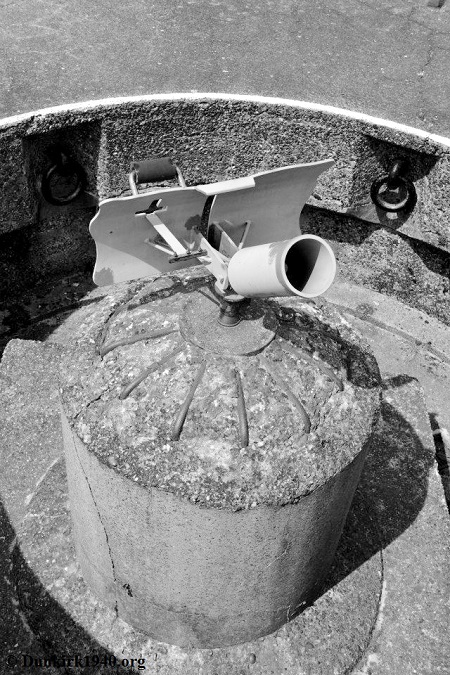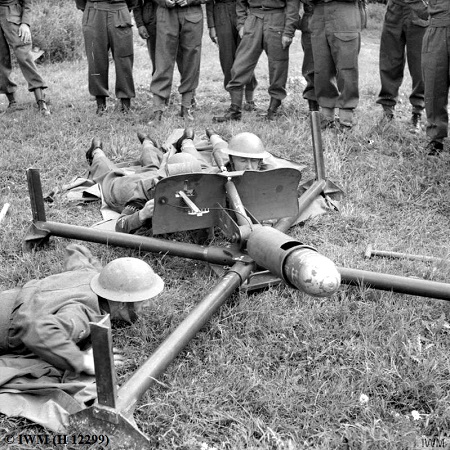
The Blacker Bombard is also commonly referred to as the spigot mortar. It was intended for anti-tank use and was the brainchild of Lt-Col. Stewart Blacker. An extremely basic design, it was developed around the time of Dunkirk and with priorities focused on the replacement of the equipment left in France, it took the personal intervention of no less than Churchill himself for the Bombard to make it through to production. In the Southern Command area alone, some 14,000 were ordered for issue to the troops defending the area.
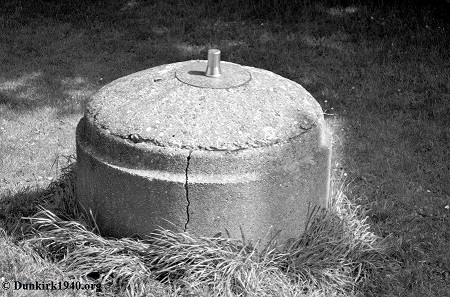
Concrete Bombard emplacement located in the grounds of Coalhouse Fort in Essex
The Bombard had a calibre of 29 mm and weighed 360 lbs. Firing a 20lb HE charge to a range of 100 yards, with a crew of three to five men. Due to the low velocity of the Bombard, it was not capable of actually penetrating the armour of its target. Tests showed that the Bombard was most effective only at close ranges, so it would take a great deal of courage to actually remain in place to operate it to its maximum effect. The Bombard was deployed on either a 'portable' steel cross-shaped stand, or for more permanent emplacements, was also mounted on prepared concrete mounts which were supplemented with ready lockers for the ammunition. Due to being muzzle-loaded, the rate of fire was extremely slow and ranged from as little as six shots per minute through to a maximum of twelve. Given this, it seems surprising that each Bombard was issued with as many as 150 rounds.
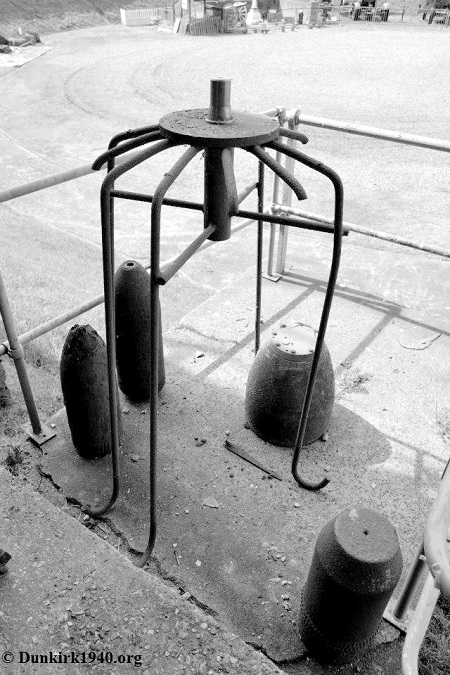
In the 1980's, members of the Coalhouse Fort Presevation Society were able to recover a Bombard which was located in the village of Lindford in Essex. The steel re-enforcement is still on display in the Fort.
Other issues included a temperamental fuse, which often resulting in the round simply bouncing off the target without detonating, and due to the blast radius when they did explode, the crews of the Bomard were at equal risk from the explosion.
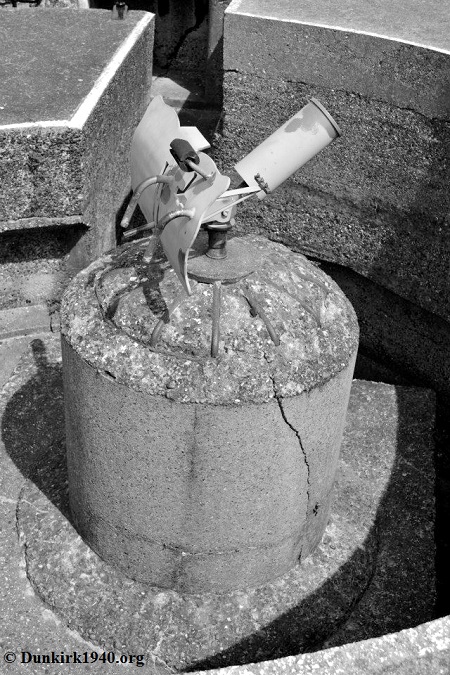
The images above and below show a restored Bombard position in Tilbury Fort. When the Fort was converted to breech-loading guns from the Victorian rifled muzzle-loaders, a series of concrete emplacements was added to the eastern side of the Fort along the river. These were in conjunction to a similar upgrade across the river at Newtavern Fort in Gravesend, Kent. This was done in 1903. The 6" guns were soon obsolete and the main defences of London were pushed further towards the sea, resulting in the removal of the guns from the forts. During WW2, one of the positions was converted into a Bombard emplacement. English Heritage, who own and operate the site, reinstated the Bombard as part of a refurbishment in the 1990's.
